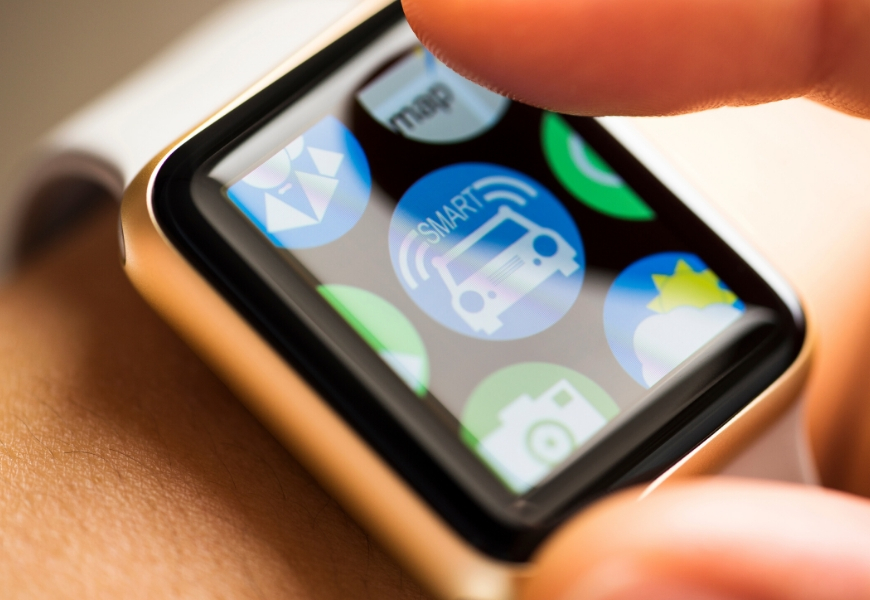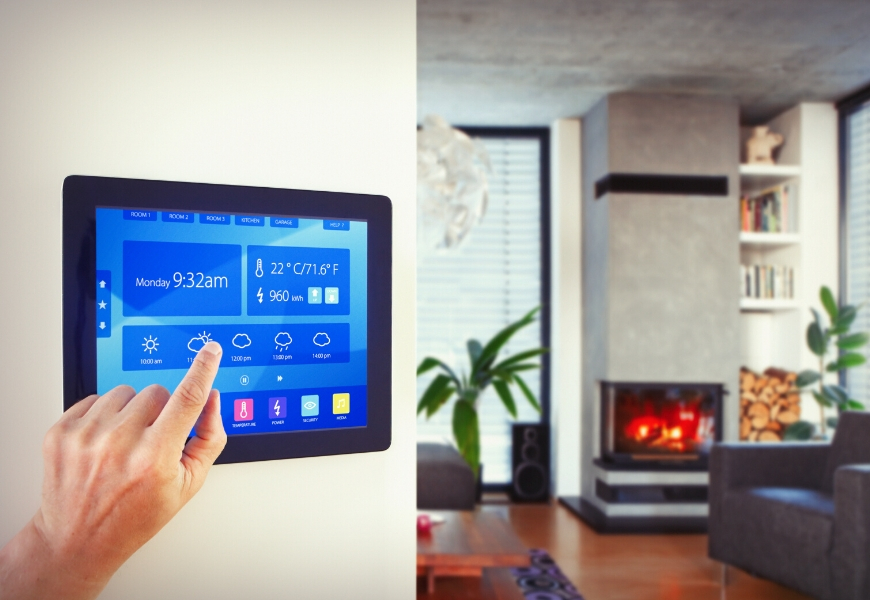Green machines: smart devices are getting greener
The industrial revolution, and the ensuing full-steam-ahead mentality of the 20th century, didn’t exactly have environmental considerations as a top priority.
Thankfully today though, technology is playing a role in helping to rebalance our relationship with the environment.
This includes obvious innovations like electric cars, as well as simpler everyday productivity efficiencies like videoconference calls, which replace the need to travel to a physical location.
And what do these more environmentally-conscious devices and systems have in common?
Connectivity.

Going green
Unsurprisingly, the digital revolution – including those ever-greener devices – is being driven by fast broadband.
Nearing closer to completing its volume rollout^, the nbn™ broadband access network brings with it the opportunity for Australian homes and businesses to connect with the outside world and achieve greater interconnectivity inside the home.
These smart homes are the net result of the booming Internet of Things (IoT) phenomenon.
IoT refers to any device that can now connect to the internet, particularly those items that were once idle. This enables them to be updated, optimised, customised and accessed remotely.
And Australians are embracing this fast broadband, smart device future.

By 2021, the average Australian home is expected to have more than 30 connected devices. By 2023, the IoT industry will have grown in Australia from its current annual $1 billion market share to $5.3 billion (as forecast by technology analyst firm Telsyte).
Let’s take a closer look at some of the devices that are plugging into the nbn™ access network to improve our modern relationship with the environment.
Driving innovation
There’s more to the ‘green’ cars of the future than solely electric power.
While the well-known examples, like those from Tesla, point to a fossil fuel-free future for personal cars, they are currently too expensive for general consumers.
Yet, we are seeing the rise of plug-in hybrid electric vehicles (PHEVs) in Australia that are bridging the divide between petrol and solar.
PHEVs use a mix of electric or fuel-based power and offer more than just pressing a button to switch between the two.
Take the Volvo S60, for example.
This family sedan is one clever car. While driving, it can switch between petrol and electric power based on the way the car is being driven: if the pedal isn’t to the floor, it opts for electric. It can also convert energy generated from braking into electricity to offer extra charge for a longer journey.

What’s really smart about this car is how you can interact with it from your home.
While it’s plugged into a wall socket in your garage, you can log in via an app to monitor the charge, timing your departure for when it’s at 100 per cent. You can even start some features from the app before you leave, like getting the engine warmed up, setting the perfect in-car temperature and even heating the seats before you unplug the car, ultimately saving on fuel burn.
The great news is there are plenty of vehicles working towards this hybrid goal. BMW has its X3 range. There’s also the GLC range from Mercedes, and Toyota has the Prius.
It’s not just about smart cars for connected transportation, either. Technology is also making bike hire even easier.
Services like Lime and CityCycle use city-wide Wi-Fi hubs so users can connect to an app to discover the location of a public pushbike, ride it to a new destination, and leave it there for someone else to find and ride.
Controlling the in-home climate
Australia can be a land of extremes. Keeping your home at a constant temperature, no matter what the weather, can be a big drain on gas and electricity resources which, in turn, impacts the environment.
By using efficient broadband, like services over the nbn™ access network, several household devices can monitor weather patterns, receive remote instructions and adapt to conditions on the fly to reduce the amount of resources needed to maintain the preferred temperature.
Velux is one example of a company innovating in this space.
Indoor climate control is at your fingertips thanks to smartphone-controllable smart skylights and smart blinds that connect to sensors.
The sensors monitor temperature, humidity and even carbon dioxide levels so the skylights and blinds can open and close themselves to manage the climate inside your home.
You can also open and close them remotely on-demand for an extra step of efficiency when controlling the optimal temperature.

Smart water-management devices are starting to emerge, too.
These can monitor and track water usage throughout the home, giving you a report that can provide an effective read on where and how you are using water, and where you can make consumption improvements.
A simple outdoor solution is smart garden watering systems.
These allow you to choose from a huge range of plant types, and then instructs the device on how much water the species needs. They can also track light, humidity, moisture and soil nutrition to ensure automatic sprinklers don’t turn on at an ineffective time, like when it’s raining.
Illuminating energy consumption
Even the humble smart light can have significant environmental benefits.
The Philips Hue lets you use a smartphone app to control up to 50 lightbulbs throughout your home via Wi-Fi. This gives you remote control of your lights to adjust the brightness or confirm you haven’t accidently left any lights on. If you have, you can turn them off no matter where you are.
Smart plugs, such as the Belkin WeMo Insight, work in much the same way.
You can turn appliances or devices on and off completely from wherever you are to save energy (even by voice command with a compatible smart speaker).
This device can also monitor and record the energy used through the smart plug, giving you insights into how big an impact a device is having on your power bill.


